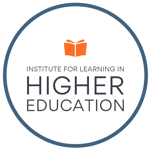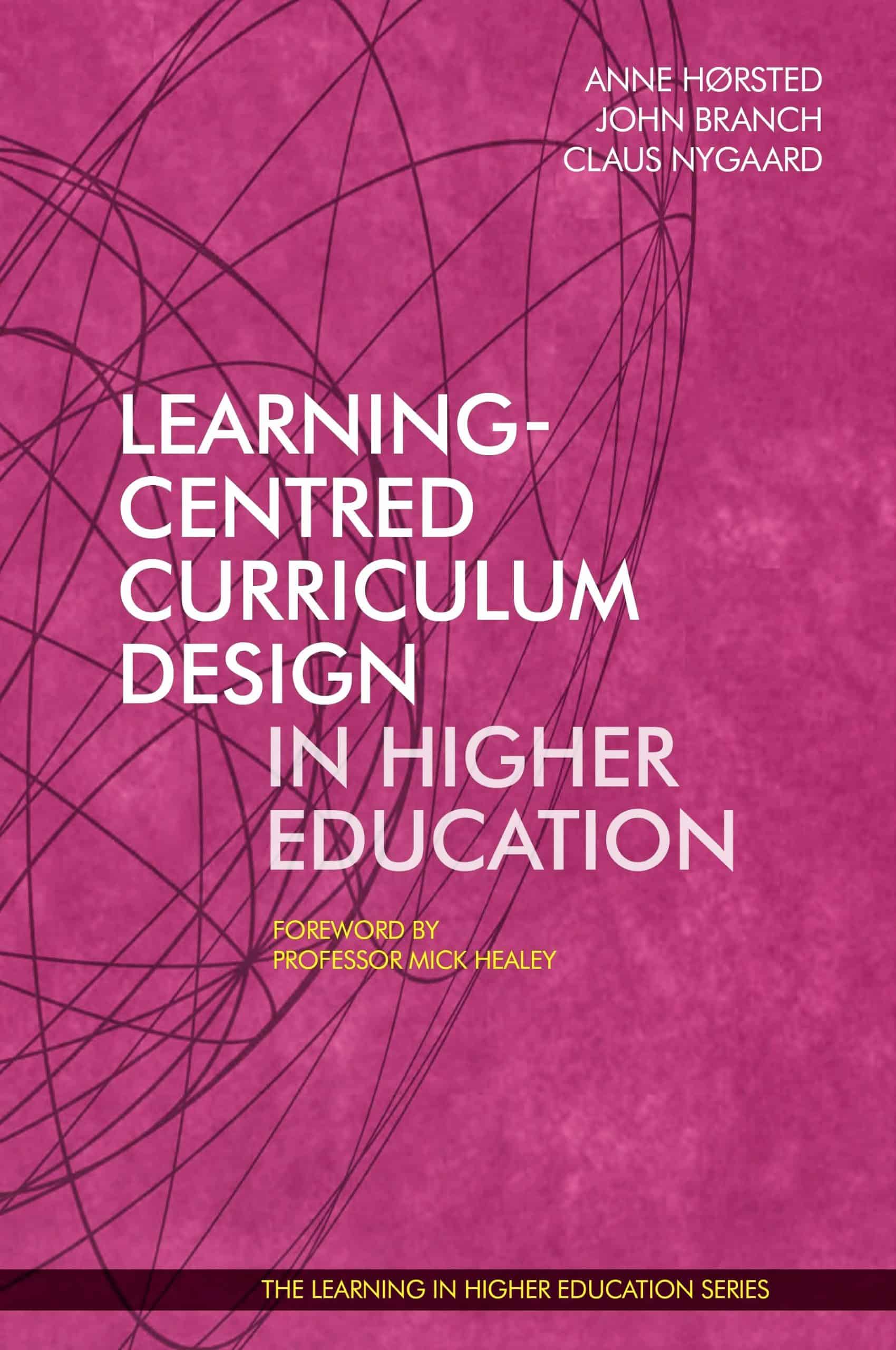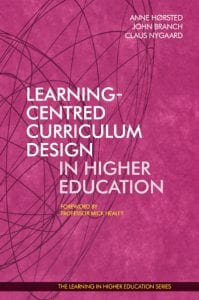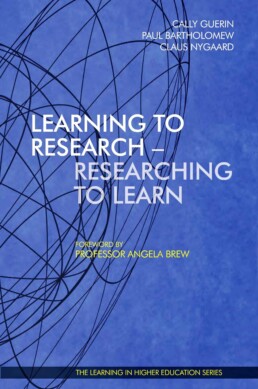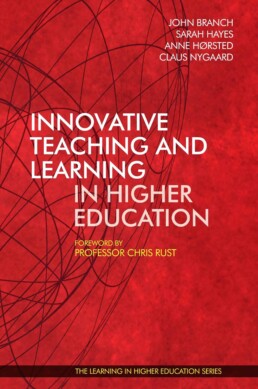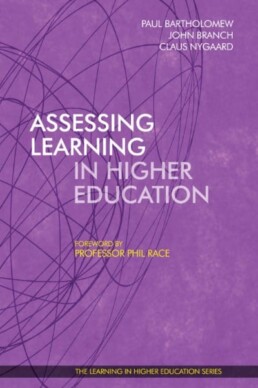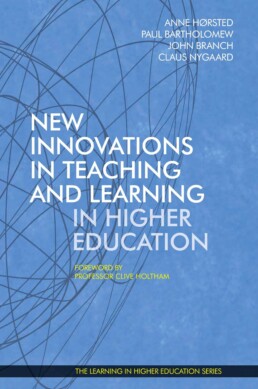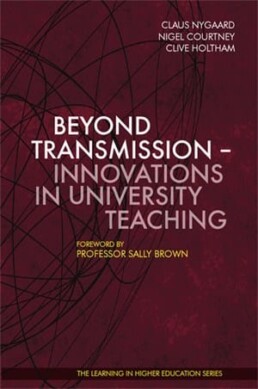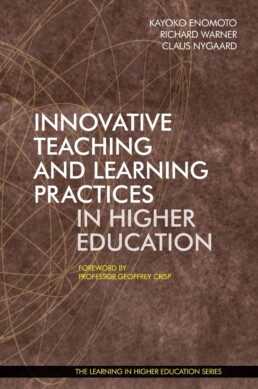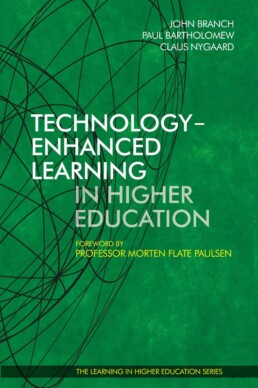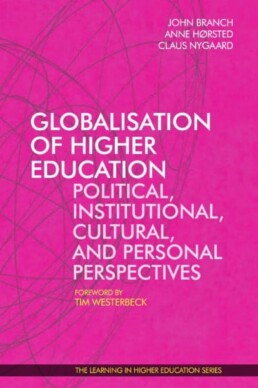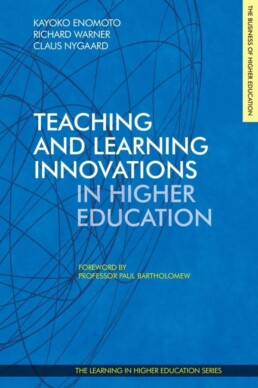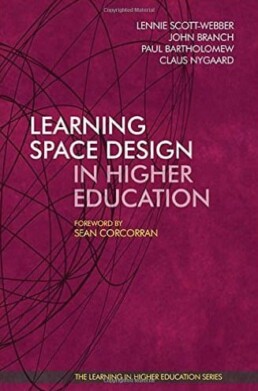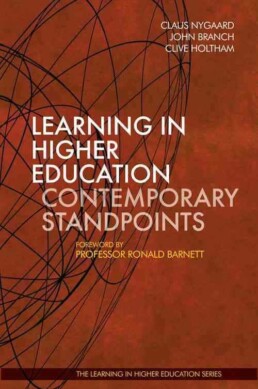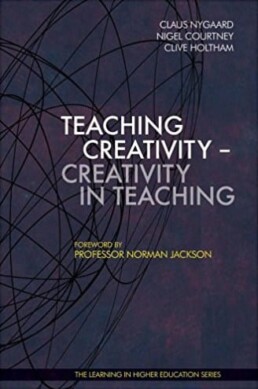Learning-Centred Curriculum Design in Higher Education (BOOK)
Learning-Centred Curriculum Design in Higher Education is written to inspire and empower university teachers to engage in curriculum design processes that centre both the learning process and students’ learning outcomes.
The book is structured by a central model of curriculum design, which links together learning (how students learn versus what students learn) and curriculum design (the process by which we design versus what we design).
The book holds ten illustrative examples of learning-centred curriculum design spanning four distinct approaches:
- learning-centred curriculum design with the main focus on how students learn
- learning-centred curriculum design with the main focus on what students learn
- learning-centred curriculum design with the main focus on how the design process takes place
- learning-centred curriculum design with the main focus on what curriculum is designed
100 in stock
Description
Learning-Centred Curriculum Design in Higher Education
Are you engaged in curriculum design and needs inspiration for how to centre student learning?
Then read on. This book may be for you!
This book on Learning-Centred Curriculum Design in Higher Education contains eleven chapters written by faculty members who have all been involved in inspiring curriculum design processes.
The book is truly international with curriculum design cases from Denmark, England, Northern Ireland, South Africa, Turkey and the USA. However, the authors come from different cultural backgrounds and thus show considerable diversity in curriculum design approaches. They have in common that they are all pioneering learning-centred activities in their respective curricula. This book’s beauty is that it is written by reflective curriculum design practitioners, as they have experienced personal success with their curriculum (re)design processes.
The important move from teaching to learning
The book shows inspirational examples of curriculum design that has led to the replacement of teacher-centric didactic teaching with student-driven learning-centred activities.
The book is structured by a central model of curriculum design, which links together learning (how students learn versus what students learn) and curriculum design (the process by which we design versus what we design).
The book holds ten illustrative examples of learning-centred curriculum design spanning four distinct approaches:
- learning-centred curriculum design with the main focus on how students learn
- learning-centred curriculum design with the main focus on what students learn
- learning-centred curriculum design with the main focus on how the design process takes place
- learning-centred curriculum design with the main focus on what curriculum is designed
As you read the book, you will learn to look at curriculum design from those four perspectives. In that way, curriculum design moves away from just module/course/syllabus planning.
How do students learn?
If you take the first approach (how do students learn), curriculum design becomes a discussion anchored in learning theory, and you have to account for your design choices based on your view on student learning. What is your view on student learning? Behavioural? Cognitive? Social? Or something else? How does your understanding of student learning affect your curriculum design choices? Who directs the learning process? Who owns the learning process? Those are some of the important questions you may ask yourself if your focus is on how students learn.
What do students learn?
If you take the second approach (what do students learn), curriculum design focuses more on the learning process outcome. What do you wish students to learn? What should they leave with after your module/course? How do you design for such learning outcomes? How do your curriculum scaffold the students in reaching such learning outcomes? And again, who directs student learning? How is student learning directed? Those are just some of the few important questions to ask from this perspective.
How do we design?
If you take the third approach (how do we design?), the process by which you design the curriculum becomes central. Here you look at the decision making processes behind curriculum design. The institutional practices that are taken for granted at your university. Who makes curriculum design choices? What informs them? Why do they design the curriculum in this way? What is your university known for? A certain approach to student learning? A certain way of studying? For involving students in the curriculum design process? For engaging alumni and business people in the curriculum design process? Those are important questions to ask from this perspective.
What do we design?
If you take the fourth approach (what do we design?), the curriculum design process focuses mainly on the outcome – the curriculum itself. Here you take a closer look at the designed activities of the curriculum. What activities are planned? When do they take place? What are the aims of those activities? How are those activities helping students learn? Who is responsible for those activities? Are the activities teacher-driven or student-driven? How are students informed about their progress during activities? Which types of feedback are given to students? How are the designed activities, assessment practices, and student learning aligned? These are some of the questions you would ask from this perspective.
Published: 2017
Pages: 320
ISBN: 9781911450153
Read the book for inspiration
Learning-Centred Curriculum Design in Higher Education is written to inspire and empower university teachers to engage in curriculum design processes that centre both the learning process and students’ learning outcomes. The book aims to inspire university teachers and encourage investment in designing a more learning-centred curriculum through its examples. As evidence from these examples shows, there are great benefits for students’ engagement, self-efficacy, learning outcomes, and employability.
About the Editors of Learning-Centred Curriculum Design in Higher Education
Anne Hørsted is Adjunct Professor at Syddansk Universitet, Senior Consultant at cph:learning in Denmark, and Adjunct Professor at the Institute for Learning in Higher Education.
John Branch is the Academic Director of the part-time MBA programmes and Assistant Clinical Professor of Business Administration at the Stephen M. Ross School of Business, and Faculty Associate at the Center for Russian, East European, & European Studies at the University of Michigan in Ann Arbor, U.S.A.
Professor Dr Claus Nygaard is Executive Director of the Institute for Learning in Higher Education (LiHE) and Executive Director of cph:learning and the Steelcase Active Learning Centre in Copenhagen.
Table of content for Learning-Centred Curriculum Design in Higher Education
This book holds 11 chapters which all discuss and showcase Learning-Centred Curriculum Design in Higher Education. The chapters are:
- Chapter 1: Four Perceptions of Curriculum: Moving Learning to the Forefront of Higher Education. By Claus Nygaard, Anne Hørsted, and John Branch (pp. 1-26).
- Chapter 2: Translating Institutional Approaches to Curriculum Design into Practice – A Leadership Perspective. By Paul Bartholomew and Roisin Curran (pp. 29-68).
- Chapter 3: From a Teaching-Centred to a Learning-Centred Approach to Curriculum Design: Transforming Teacher Candidates. By Gülbahar Yilmaz and Sevilay Bulut (pp. 69-94).
- Chapter 4: How to Design a Curriculum for Student Learning. By Anne Hørsted and Claus Nygaard (pp. 97-120).
- Chapter 5: Learning-Centred Educational Development: An Approach that Draws upon Creative Arts and Philosophies of Emancipation. By Julian Lamb, Marion Carrier, and Jacob Lamb (pp. 121-150).
- Chapter 6: Improving Learning-Centredness in a Higher Education Foundation Phase Arts Curriculum. By Eurika Jansen van Vuuren (pp. 151-180).
- Chapter 7: Designing Curriculum for Integrating Experiential Learning with Theory during Initial Teacher Education. By Andries du Plessis (pp. 183-220).
- Chapter 8: Using the ECTS for Learning-Centred Curriculum Design. By John Branch and Timothy Hartge (pp. 221-238).
- Chapter 9: Introducing the Concept of ”A Corresponding Curriculum” to Transform Academic Identity and Practice. By Sarah Hayes (pp. 241-274).
- Chapter 10: Academic Rigour: Harnessing High-Quality Connections and Classroom Conversations. By Timothy Hartge and John Branch (pp. 275-290).
- Chapter 11: Curriculum Design for Enhancing Employability through Learning Experiences with External Stakeholders. By Jesper Piihl, Anna Marie Dyhr Ulrich, and Kristian Philipsen (pp. 291-310).
